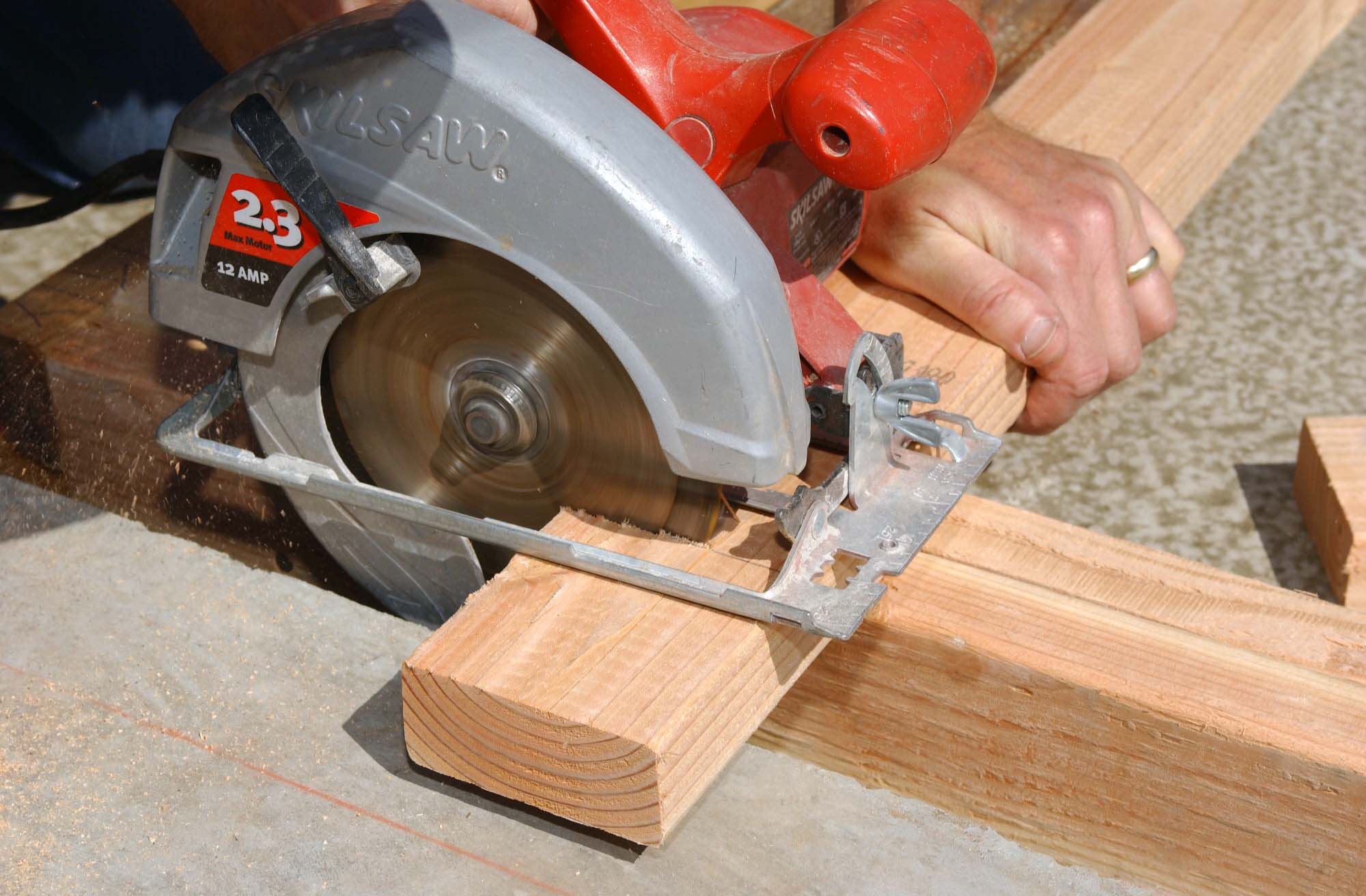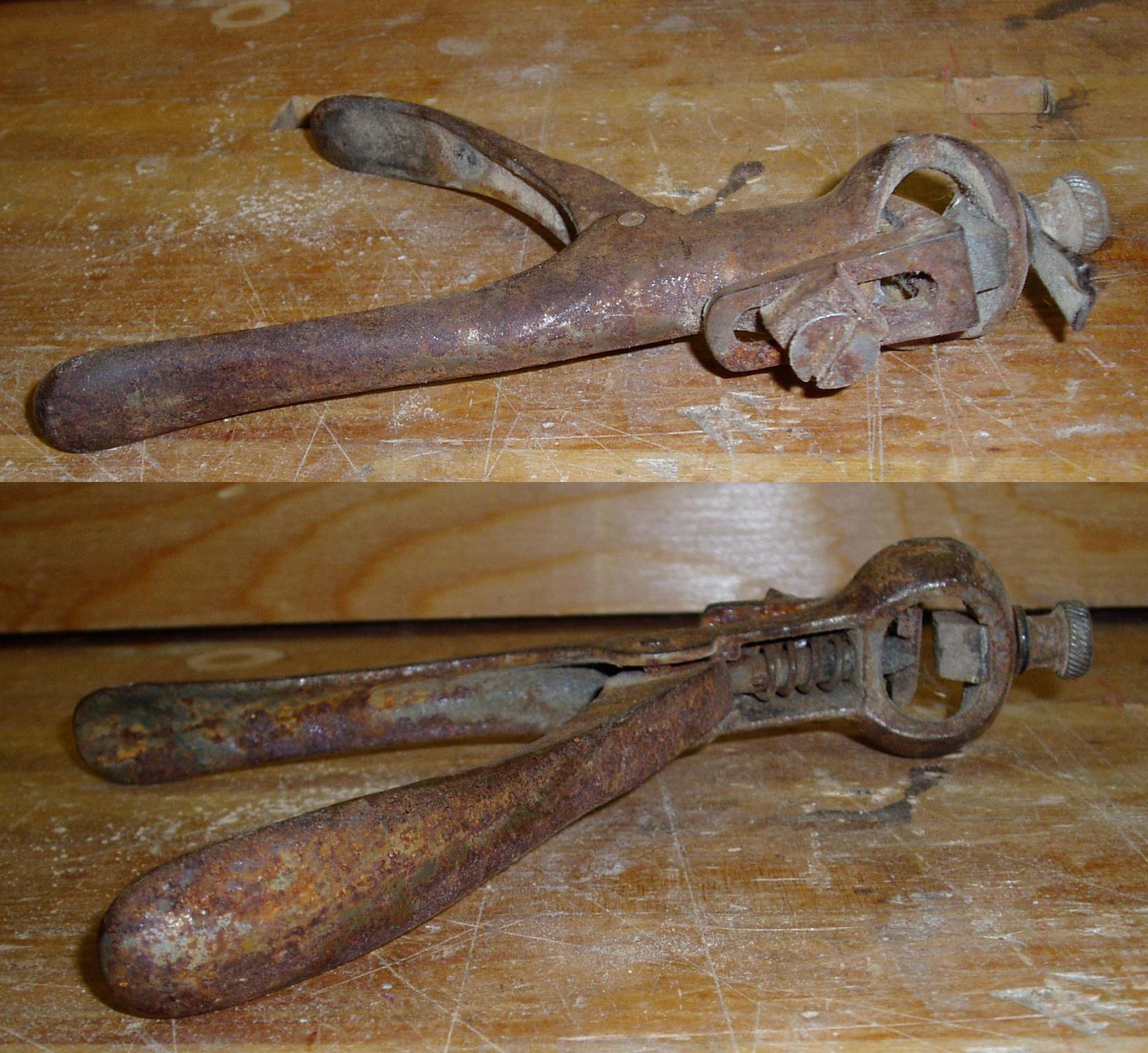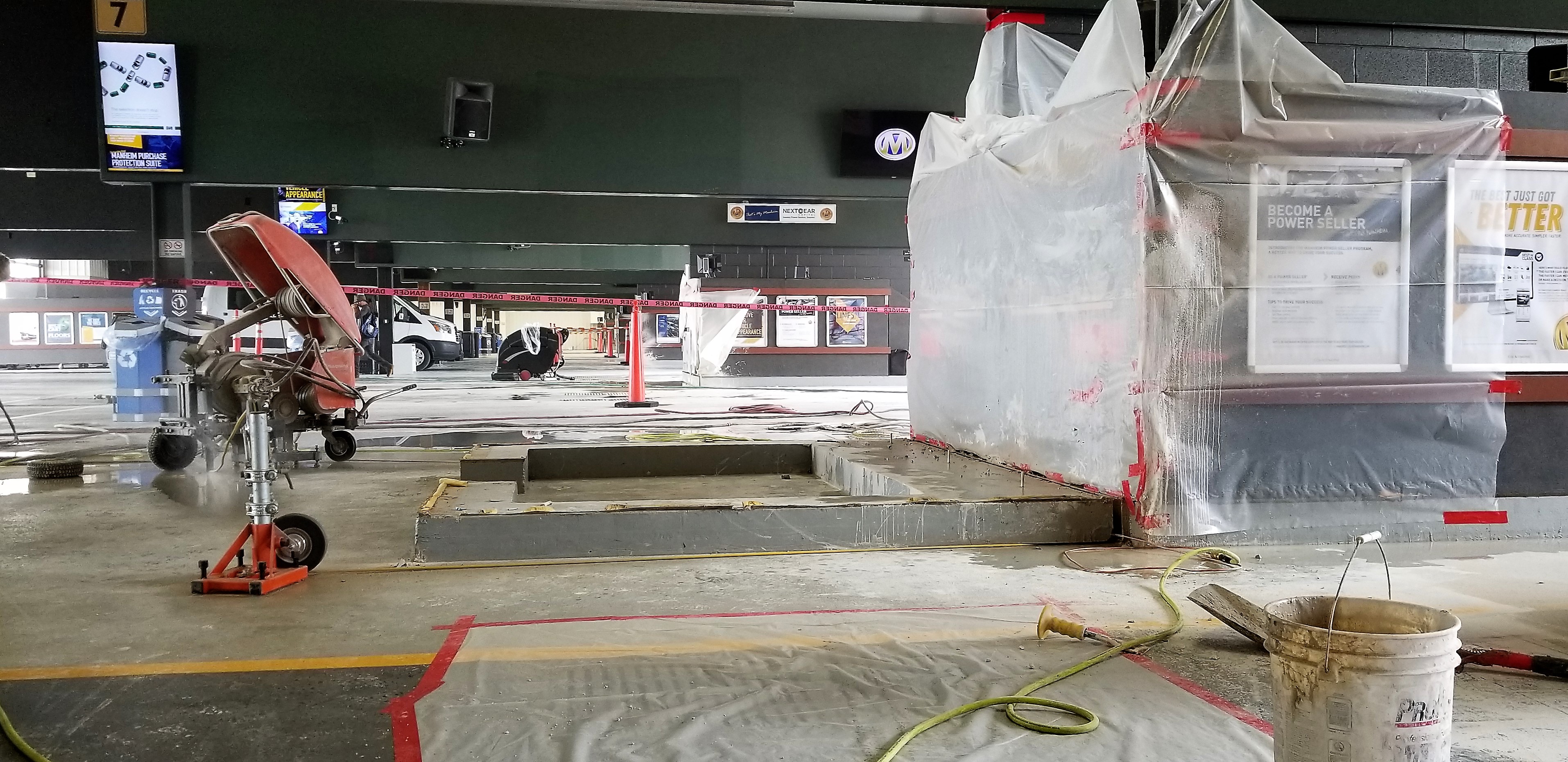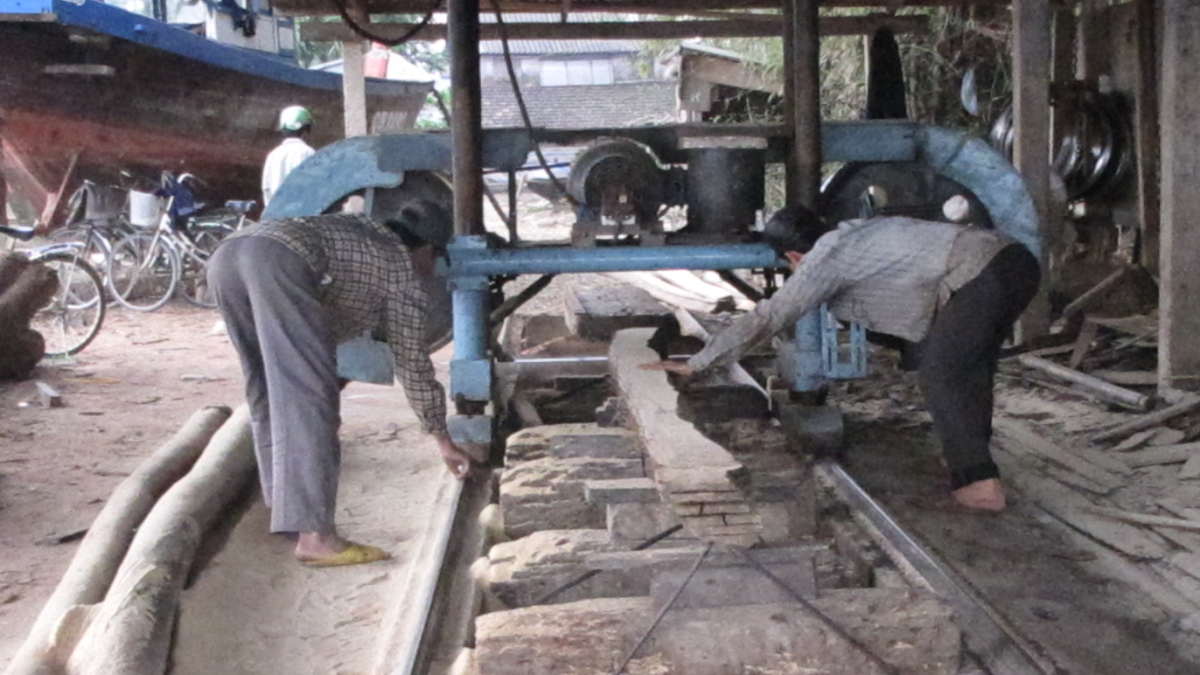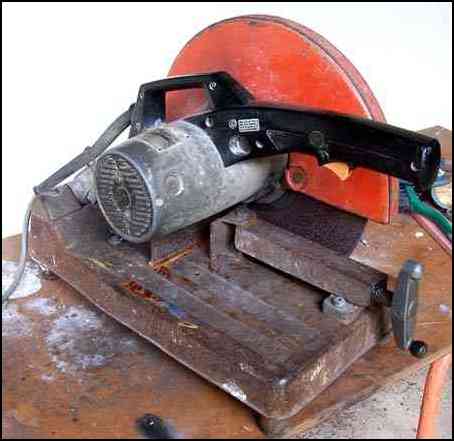|
Saw
A saw is a tool consisting of a tough blade, Wire saw, wire, or Chainsaw, chain with a hard toothed edge used to cut through material. Various terms are used to describe toothed and abrasive saws. Saws began as serrated materials, and when mankind learned how to use iron, it became the preferred material for saw blades of all kinds. There are numerous types of hand saws and mechanical saws, and different types of blades and cuts. Description A saw is a tool consisting of a tough blade, Wire saw, wire, or Chain saw, chain with a hard toothed edge. It is used to cut through material, very often wood, though sometimes metal or stone. Terminology A number of terms are used to describe saws. Kerf The narrow channel left behind by the saw and (relatedly) the measure of its width is known as the kerf. As such, it also refers to the wasted material that is turned into sawdust, and becomes a factor in measurements when making cuts. For example, cutting an 8-foot (2.4 meter) pie ... [...More Info...] [...Related Items...] OR: [Wikipedia] [Google] [Baidu] |
Chainsaw
A chainsaw (or chain saw) is a portable handheld power saw, power saw that cuts with a set of teeth attached to a rotating chain driven along a guide bar. Modern chainsaws are typically gasoline or electric and are used in activities such as tree felling, limbing, Log bucking, bucking, pruning, cutting firebreaks in wildland fire suppression, harvesting of Wood fuel#Firewood, firewood, for use in Chainsaw carving, chainsaw art and chainsaw mills, for cutting concrete, and cutting ice. Precursors to modern chainsaws were first used in surgery, with patents for wood chainsaws beginning in the late 19th century. A chainsaw comprises an engine, a drive mechanism, a guide bar, a cutting chain, a tensioning mechanism, and safety features. Various safety practices and working techniques are used with chainsaws. History In surgery A "flexible saw", consisting of a fine serrated link chain held between two wooden handles, was pioneered in the late 18th century (–1785) by two Scot ... [...More Info...] [...Related Items...] OR: [Wikipedia] [Google] [Baidu] |
Circular Saw
A circular saw or a buzz saw, is a power-saw using a toothed or Abrasive saw, abrasive disk (mathematics), disc or blade to cut different materials using a rotary motion spinning around an Arbor (tool), arbor. A hole saw and ring saw also use a rotary motion but are different from a circular saw. ''Circular saws'' may also be loosely used for the blade itself. Circular saws were invented in the late 18th century and were in common use in sawmills in the United States by the middle of the 19th century. A circular saw is a tool for cutting many materials such as wood, masonry, plastic, or metal and may be hand-held or mounted to a machine. In woodworking the term "circular saw" refers specifically to the hand-held type and the table saw and Miter saw#Power miter saw, chop saw are other common forms of circular saws. "Skilsaw" and "Skil saw" have become generic trademarks for conventional hand-held circular saws in the United States of America. Circular saw blades are specially d ... [...More Info...] [...Related Items...] OR: [Wikipedia] [Google] [Baidu] |
Chain Saw
A chainsaw (or chain saw) is a portable handheld power saw that cuts with a set of teeth attached to a rotating chain driven along a guide bar. Modern chainsaws are typically gasoline or electric and are used in activities such as tree felling, limbing, bucking, pruning, cutting firebreaks in wildland fire suppression, harvesting of firewood, for use in chainsaw art and chainsaw mills, for cutting concrete, and cutting ice. Precursors to modern chainsaws were first used in surgery, with patents for wood chainsaws beginning in the late 19th century. A chainsaw comprises an engine, a drive mechanism, a guide bar, a cutting chain, a tensioning mechanism, and safety features. Various safety practices and working techniques are used with chainsaws. History In surgery A "flexible saw", consisting of a fine serrated link chain held between two wooden handles, was pioneered in the late 18th century (–1785) by two Scottish doctors, John Aitken and James Jeffray, for symp ... [...More Info...] [...Related Items...] OR: [Wikipedia] [Google] [Baidu] |
Saw Set
A saw set is a tool or part of the tool kit for tuning saw blades. It adjusts the ''set'', or distance the saw tooth is bent away from the saw blade. The magnitude of set determines the cut width and prevents the blade of the saw from binding in the wood. Many different manual and automated saw sets have been developed since at least the 19th century. Purpose When the teeth of a saw are formed from the body, they are in line and the same thickness as the blade immediately behind them. A saw with this configuration is described as having 'no' or '0' set. To prevent the body of the blade binding and for other enhancements to the cutting action, the teeth can be set (angled out) from the blade. Teeth can be set in several patterns: single-sided set, alternating set or a patterned set. Most Western and Asian handsaws use an alternating set, whereby a tooth is set the opposite direction from the preceding one. Specialized tools like veneer saws or flush-cut saws may be set only to ... [...More Info...] [...Related Items...] OR: [Wikipedia] [Google] [Baidu] |
Hand Saw
In woodworking and carpentry, hand saws, also known as "panel saws", are used to cut pieces of wood into different shapes. This is usually done in order to Woodworking joints, join the pieces together and carve a wooden object. They operate by having a series of sharp points, called teeth, of a substance that is harder than the wood being cut. Hand saws have been used for thousands of years. Egyptian hieroglyphs, Egyptian hieroglyphics exist depicting ancient woodworkers sawing boards into pieces, and ancient bow saws have been found in Japan. Cut patterns on ancient boards are occasionally observed to bear the unique cutting marks left by saw blades, particularly if the wood was not 'smoothed up' by some method. Twenty-four saws from eighteenth-century England are currently preserved.Olmert, Michael (1996). ''Milton's Teeth and Ovid's Umbrella: Curiouser & Curiouser Adventures in History'', p.178. Simon & Schuster, New York. . Materials for saw blades have varied over the ages ... [...More Info...] [...Related Items...] OR: [Wikipedia] [Google] [Baidu] |
Reciprocating Saw
A reciprocating saw is a type of handheld, small, machine-powered saw, in which the cutting action is achieved through a push-and-pull ("reciprocating") or back-and-forth motion of the blade. The original trade name, Sawzall, is often used in the United States, where Milwaukee Electric Tool first produced a tool of this type in 1951. The noun "Sawzall" is commonly applied to a smaller type of battery-powered or line powered handheld saw used in construction and demolition work, as well as in gardening and the pruning of larger trees or plants. This type of saw, also known as a hognose, recip saw, or sawsaw, has a large blade, resembling that of a Jigsaw (power tool), jigsaw, and a handle oriented to allow the saw to be used comfortably on vertical surfaces. The typical design of this tool has a foot at the base of the blade, also similar to that of a jigsaw. The user holds or rests the foot on the surface being cut, thus countering the tendency of the blade to push-away from or p ... [...More Info...] [...Related Items...] OR: [Wikipedia] [Google] [Baidu] |
Wire Saw
A wire saw is a saw that uses a metal wire or Wire rope, cable for mechanical cutting of bulk solid material such as stone, wood, glass, ferrites, concrete, metals, crystals etc.. Industrial wire saws are usually powered. There are also hand-powered survivalist wire saws suitable for cutting tree branches. Wire saws are classified as continuous (or endless, or loop) or oscillating (or reciprocating). Sometimes the wire itself is referred to as a "blade". Wire saws are similar in principle to band saws or reciprocating saws, but they use abrasion (mechanical), abrasion to cut rather than saw teeth. Depending on the application, diamond material may or may not be used as an abrasive. The wire can have one strand or many strands braided together (cable). A single-strand saw can be roughened to be abrasive, abrasive compounds can be bonded to the cable, or diamond-impregnated beads (and spacers) can be threaded on the cable. Wire saws are often cooled and lubricant, lubricated by water ... [...More Info...] [...Related Items...] OR: [Wikipedia] [Google] [Baidu] |
Bandsaw
A bandsaw (also written band saw) is a power saw with a long, sharp blade consisting of a continuous band of toothed metal stretched between two or more wheels to cut material. They are used principally in woodworking, metalworking, and lumbering, but may cut a variety of materials. Advantages include uniform cutting action as a result of an evenly distributed tooth load, and the ability to cut irregular or curved shapes like a jigsaw.. The minimum radius of a curve is determined by the width of the band and its kerf. Most bandsaws have two wheels rotating in the same plane, one of which is powered, although some may have three or four to distribute the load. The blade itself can come in a variety of sizes and tooth pitches (teeth per inch, or TPI), which enables the machine to be highly versatile and able to cut a wide variety of materials including wood, metal and plastic. Band saw is recommended for use in cutting metal as it produces much less toxic fumes and particulate ... [...More Info...] [...Related Items...] OR: [Wikipedia] [Google] [Baidu] |
Abrasive Saw
__NOTOC__ An abrasive saw, also known as a cut-off saw or chop saw, is a circular saw (a kind of power tool) which is typically used to cut hard materials, such as metals, tile, and concrete. The cutting action is performed by an abrasive disc, similar to a thin grinding wheel. Technically speaking this is not a saw, as it does not use regularly shaped edges (teeth) for cutting. These saws are available in a number of configurations, including table top, free hand, and walk behind models. In the table top models, which are commonly used to cut tile and metal, the cutting wheel and motor are mounted on a pivoting arm attached to a fixed base plate. Table top saws are often electrically powered and generally have a built-in vise (tool), vise or other clamping arrangement. The free hand designs are typically used to cut concrete, asphalt, and pipe on construction sites. They are designed with the handles and motor near the operator, with the blade at the far end of the saw. F ... [...More Info...] [...Related Items...] OR: [Wikipedia] [Google] [Baidu] |
Wood
Wood is a structural tissue/material found as xylem in the stems and roots of trees and other woody plants. It is an organic materiala natural composite of cellulosic fibers that are strong in tension and embedded in a matrix of lignin that resists compression. Wood is sometimes defined as only the secondary xylem in the stems of trees, or more broadly to include the same type of tissue elsewhere, such as in the roots of trees or shrubs. In a living tree, it performs a mechanical-support function, enabling woody plants to grow large or to stand up by themselves. It also conveys water and nutrients among the leaves, other growing tissues, and the roots. Wood may also refer to other plant materials with comparable properties, and to material engineered from wood, woodchips, or fibers. Wood has been used for thousands of years for fuel, as a construction material, for making tools and weapons, furniture and paper. More recently it emerged as a feedstock for the production ... [...More Info...] [...Related Items...] OR: [Wikipedia] [Google] [Baidu] |
